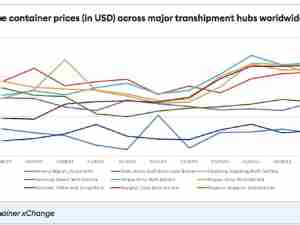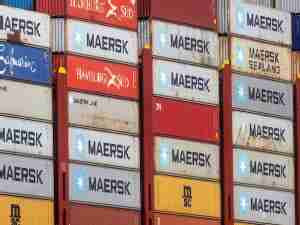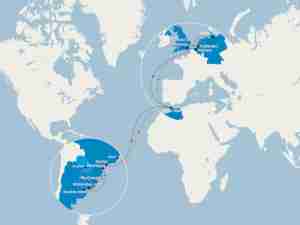Bearish Sugar? Here Are 6 Things That May Spoil the Surplus
By: Isis Almeida | Feb 12 2017 at 04:00 PM | Maritime
Counting on next season’s return to surplus to buy your sugar cheap? You may want to hedge your bets.
While most analysts forecast supplies will exceed demand in the 2017-18 season that starts in October for most countries, stockpiles will remain at historically low levels, “affording little latitude for under-performance in the major sugar producing countries,” according to Sean Diffley, head of sugar and ethanol at Tropical Research Services, which advises hedge funds.
With more than eight months to go, a lot could still go wrong to wipe out the 1 million to 3 million metric ton surplus range forecast by analysts including TRS, F.O. Licht GmbH and Kingsman SA, a unit of S&P Global Platts.
“There are a lot of balance sheets there that the trade is looking at that have best-case scenarios built into them,” said Michael Gelchie, a trading director at Sucres et Denrees SA, know as Sucden. “We still have a lot of weather variability to get through,” he said, adding that “the market doesn’t have the domestic stocks to handle another weather event.”
From the return of El Nino to the continuation of Indian imports and even the policies of U.S. President Donald Trump, here are six key concerns that participants at the Dubai Sugar Conference say could spoil the bearish party.
El Nino
Less than a year after the end of one of the strongest El Ninos on record, bringing dry weather and havoc to crops in Asia, meteorologists are already forecasting its return.
Climate models suggest neutral conditions or El Nino are the most likely scenarios for the southern hemisphere winter-spring period, Australia’s Bureau of Meteorology said last month. The odds that the weather pattern would form by the end of the year are now 50 percent, up from a previous rating of 36 percent, the U.S. Climate Prediction Center said Thursday.
“The models are suggesting that El Nino may resurface in the second half of 2017,” said Tracey Allen, an analyst at JPMorgan Chase & Co. in London. “There are wide expectations that Asian sugar production will normalize this year and that’s really very much dependent on the monsoon. That’s also a pivotal point for sugar production and potentially the transition to a more neutral to surplus balance going forward in the 2017-18 season.”
Indian Rebound
Bears are counting on the rebound of production in Asia. But the scale of the recovery in India is still uncertain, said Gareth Forber, head of sugar research at LMC International. That’s because water scarcity last summer in the state of Maharashtra has limited plantings of cane that will be harvested 18 months later.
“Secondly, water is still a problem in Karnataka so production may not rebound in this part of the country,” he said.
Another factor that may trump the bears could be Indian imports. The South Asian nation may continue to bring in sugar in the 2017-18 season to help replenish tight stockpiles, said Tom Secretan, an analyst at London-based commodities trader ED&F Man Holdings Ltd.
Talking of Trump
Traders attending the conference are concerned about uncertainty over U.S. President Donald Trump’s policies. Trump is seeking a review of the North American Free Trade Agreement, which allows Mexican sugar to flow into the U.S. In the long term, this uncertainty could reduce incentives for Mexican growers to keep producing.
Counting on EU
Traders are counting on a rebound in European Union production as a system of quotas end on Sept. 30. Kingsman sees output rising 14 percent to 19.3 million tons. Production could rise to 20 million tons, Markus Neundoerfer, a director of the sugar unit of Suedzucker AG, the bloc’s largest producer, said Sunday.
While prices that rallied 28 percent in New York last year, the most since 2009, bring every incentive for growers to boost sowings, beets that will be planted for next season aren’t even in the ground yet.
China Imports
Chinese imports could surprise to the upside, said Jonathan Drake, chief operating officer of RCMA Commodities Asia Pte. and former head of sugar at Cargill Inc. The nation already surprised traders last year, bringing in 3.7 million tons of white sugar, he said.
“Everyone underestimated China last year,” Drake said. “It’s hugely profitable to import into China.”
Brazilian Real
Lastly in Brazil, the currency in the world’s largest producer is getting stronger, potentially reducing the incentive for millers to sell, and raising the price level at which they favor ethanol over sugar production. The real gained 22 percent last year, the most since 2009, and has advanced another 4.4 percent this year.
“My view is that we could very well see a similar sugar mix in 2017-18 but that’s based on expected strength in crude oil prices, and the potential for domestic gasoline prices to continue to rise in line with world market prices,” JPMorgan’s Allen said. “The strength in the real more recently is also a very interesting factor going forward because most anticipated a slightly weaker foreign-exchange rate than where we are today.”









